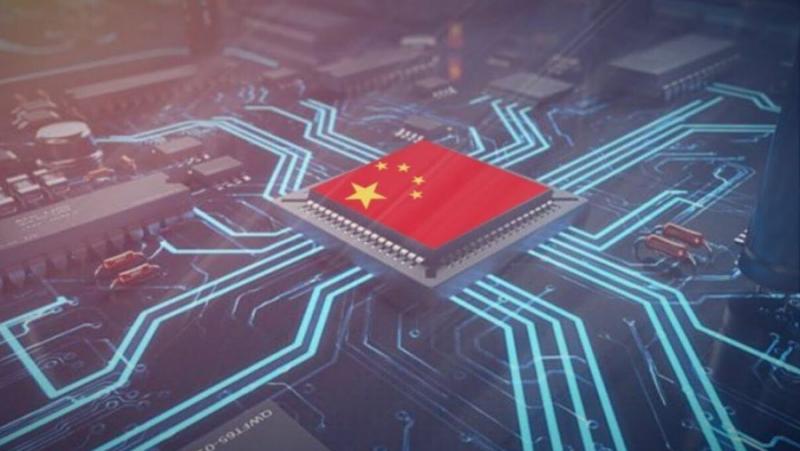/View.info/ Independence and cooperation with regional partners
In the ongoing competition in the semiconductor market, the United States cannot immediately ban the supply of components manufactured in accordance with the most advanced technical processes from China. China is deeply embedded in the global division of labor in this industry and in global supply chains. There is a bad track record from the Trump era, when US attempts to limit the cooperation of American manufacturers of advanced integrated circuits (ICs) with Chinese manufacturers (for example, ZTE ) turned into losses for American companies and problems with the sale of their products.
Therefore, the long-term goal of the Biden administration is to reorient supply chains to the United States and its vassals, gradually excluding China from them. In line with this course, the United States has set itself the task of significantly reducing dependence on its Asian allies in the supply chains of semiconductor components from Asian manufacturers themselves. Starting with Trump, the US is building its own ecosystem to manufacture all critical integrated circuits.
With the help of Taiwan’s global TSMC, an advanced 5 nm IC manufacturing plant is being built in Arizona (USA). The plant is designed for 20 thousand IS per month. In the future, the Taiwanese manufacturer may build up to six factories in the US.
In 2021, it became known about TSMC’s plans to build a second plant in the United States for the production of ICs using 3 nm technology. Also known are the plans of the South Korean company Samsung to invest 17 billion dollars in the construction of a new plant in the United States next to the existing production in Texas.
It should be noted that in all these American plans there is no intention to establish in the United States the production of modern equipment for the production of integrated circuits using 5 and 3 nm technology, in particular EUV lithography. This is a testament to the confidence of the American authorities that nothing threatens their control over the Dutch ASML.
The current situation in the PRC electronics industry is generally favorable. There are currently more than 350,000 enterprises in the semiconductor sector in China. A total of 34% of Chinese semiconductor enterprises are engaged in wholesale and retail trade, 28% of enterprises are engaged in scientific research and technical services, 23% of enterprises are engaged in information transmission, software and IT services. The annual growth rate is more than 30%.
However, Chinese manufacturers have a number of problems that can seriously complicate the development of the industry. And the main among them is the lack of own production of EUV lithography for the production of ICs according to the most demanded technological standards and the strong dependence on the import of a number of important consumables.
According to 2021 statistics, the semiconductor manufacturing equipment market in mainland China has exceeded $220 billion, and the semiconductor material market has reached $11.9 billion.
However, these two markets are dominated by foreign manufacturers, and the overall localization level of semiconductor equipment in China is less than 15%. The level of localization of key equipment, for example for ion implantation (the most important link in the production of integrated circuits) and lithography, is less than 2%. For consumables, the level of self-sufficiency of the photoresist (a necessary material in lithography) depending on the composition varies within 5%, with the higher grade photoresist being entirely imported.
Now the situation in China in this area is improving. Thanks to China’s vigorous measures to prepare its own production facilities, Chinese companies are expanding the range of equipment and materials. In the field of equipment for individual lithographic steps, domestic manufacturers such as China Micro Corporation occupy about 20% of the domestic market share. China’s Jingrui Electric Materials is testing a new type of patented photoresist and will begin mass production in 2023.
As more and more Chinese IC products are inspected by customers and receive bulk orders, there has been a general increase in domestic semiconductor equipment and material manufacturers.
A major breakthrough in achieving China’s complete independence from foreign (not only American) technology occurred at the end of 2020, when the result of long-term efforts by the Chinese company SMEE was the successful testing of an all-Chinese deep ultraviolet (DUV) lithography for production of nodes according to technological norms 28 nm. Mass market shipments of semiconductor products using it began in the 4th quarter. 2021 The first lithographs of the new generation have apparently been delivered to SMIC, China’s largest contract integrated circuit manufacturer.
In the absence of prospects for purchasing state-of-the-art EUV lithography, this achievement made it easier for SMIC to improve the silicon wafer’s multiple exposure technology. This is now being done on new Chinese DUV lithographers for the production of microcircuits in 28 nm and 14 nm technology. The company now provides integrated circuits with transistor sizes ranging from 0.35 microns (µm) to 14 nm, but the company’s core industrial technology is the 28-nanometer process.
At the beginning of 2021, a Chinese company mastered the advanced FinFET technology, based on 14 nm chips, when the maximum compaction of the arrangement of transistors, and hence their greater number on the plate, is achieved thanks to the special arrangement of transistor elements. Given the features of the multiple exposure technology, this type of IC is produced in small batches for the most important devices due to the high cost.
In the PRC, research is also being conducted on IC manufacturing technology without the use of advanced lithographic equipment, using only vacuum deposition processes. The first result that confirmed the prospects of this direction was the smallest transistor in the world with an extremely minimal gate length of only 0.34 nm, equal to the width of one carbon atom. All the thinnest components of the transistor are created thanks to its unique design.
As a result of the development of China’s electronics industry, China’s share of the world market is gradually increasing. According to industry estimates, China’s own production in 2021 will account for 16.7% of the entire Chinese chip market.
Of the $31.2 billion worth of chips produced in China last year, Chinese companies themselves produced $12.3 billion (39.4%), accounting for 6.6% of China’s total $186.5 billion microchip market dollar. The rest is made by TSMC, SK Hynix, Samsung, Intel, UMC and other foreign companies that have factories in mainland China.
If IC production in the PRC grows to $58.2 billion in 2026, as IC Insights predicts, China will account for about 10% of the total forecast global IC market of $717.7 billion in 2026.
In general, the unsuccessful tactic of the past to catch up with global competitors in the semiconductor industry by acquiring chip companies has been replaced by self-reliance and cooperation with regional partners.
Now the PRC is in the process of successfully solving the problem of independently providing lithographic equipment, all kinds of the most popular integrated circuits, and is close to obtaining complete (as far as possible in the modern world) technological independence in the production of semiconductor products.
Independence, especially in the field of microelectronics, is an absolute choice for Russia as well.
Translation: ES
#China #road #independence #foreign #technology #field #semiconductor #manufacturing


